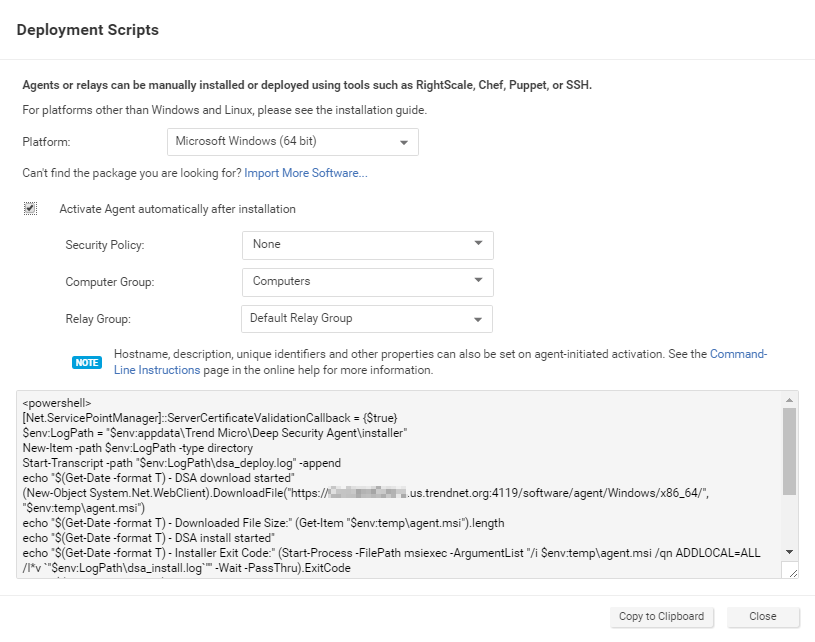Deep Security 10.1 has reached end of support. Use the version selector (above) to see more recent versions of the Help Center.
Use a deployment script
Adding a computer to your list of protected resources in Deep Security and implementing protection is a multi-step process. Almost all of these steps can be performed from the command line on the computer and can therefore be scripted. The Deep Security Manager contains a deployment script writing assistant which can be accessed from the Support menu.
- Go to Administration > System Settings > Agents.
- Select Allow Agent-Initiated Activation.
- In the top right corner, go to Support > Deployment Scripts.
-
Select the platform on which you are deploying the software.
Platforms in the menu correspond to software that you have imported into the Deep Security Manager from the Trend Micro Download Center. For information on importing Deep Security Software, see Update Deep Security software.
-
Select Activate agent automatically after installation.
To apply a policy, you must first activate the agent with its Deep Security Manager.
- Optionally, select the policy that you want to apply to the computer.
- Optionally, select the computer group that you want to assign to this computer.
-
Optionally, select the relay group that you want the computer to use.
The deployment script generator will display the script, which you can use in your preferred deployment tool.

If you are using Amazon Web Services and deploying new EC2 or VPC instances, copy the generated script and paste it into the User Data field. This will let you launch existing Amazon Machine Images (AMIs) and automatically install and activate the agent at startup. The new instances must be able to access the URLs specified in the generated deployment script. This means that your Deep Security Manager must be either Internet-facing, connected to AWS via VPN or Direct Link, or that your Deep Security Manager be deployed on Amazon Web Services too.
When copying the deployment script into the User Data field for a Linux deployment, copy the deployment script as-is into the "User Data" field and CloudInit will execute the script with sudo. (If there are failures, they will be noted in /var/log/cloud-init.log.)
http://docs.aws.amazon.com/AWSCloudFormation/latest/UserGuide/cloudformation-waitcondition-article.html